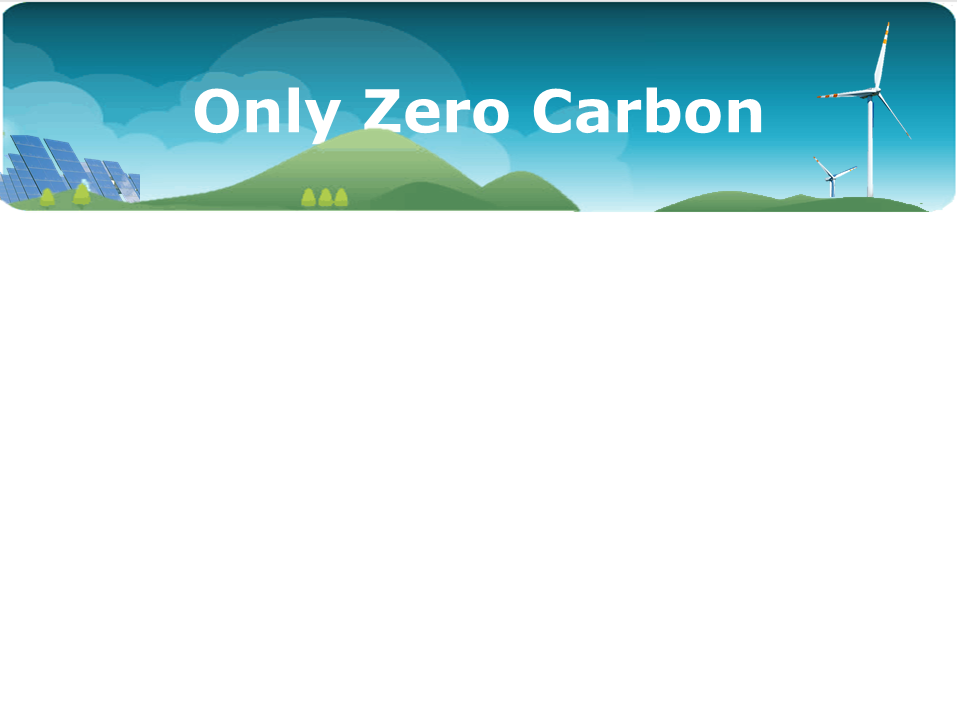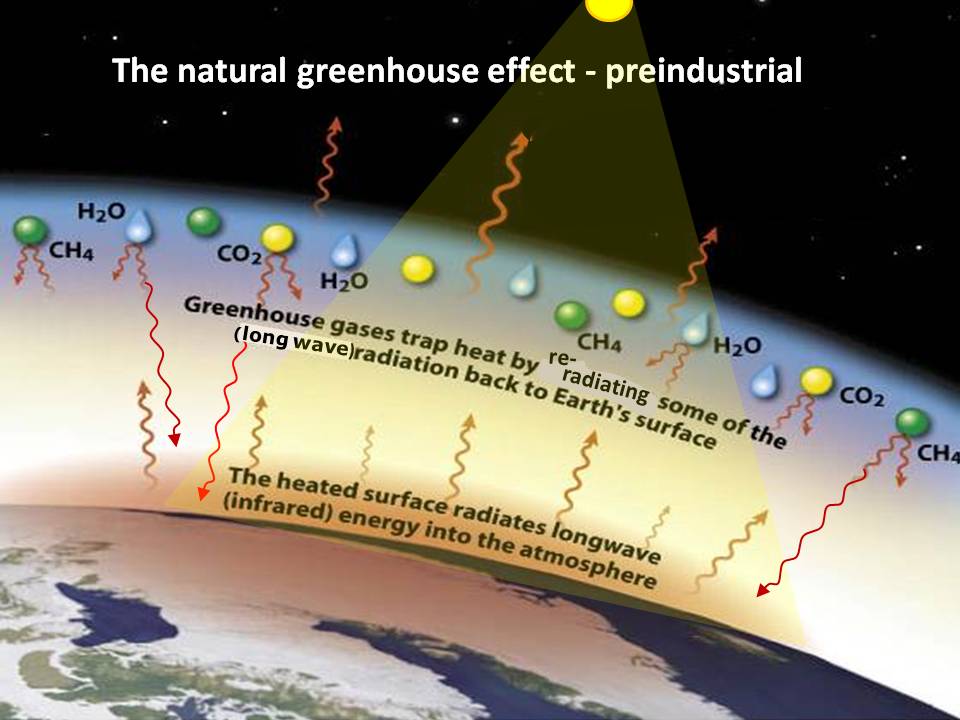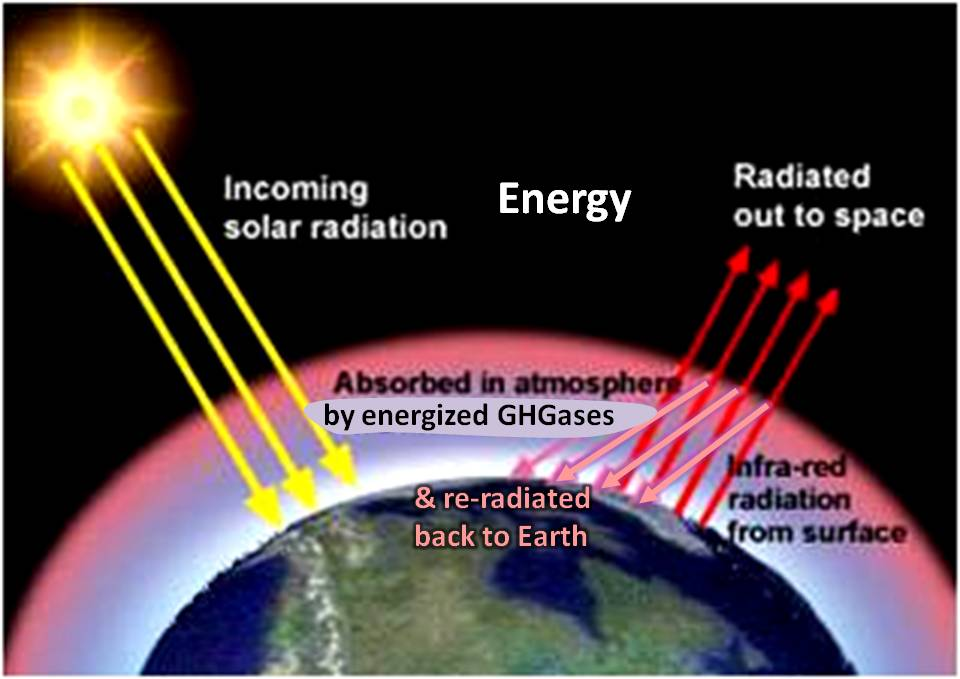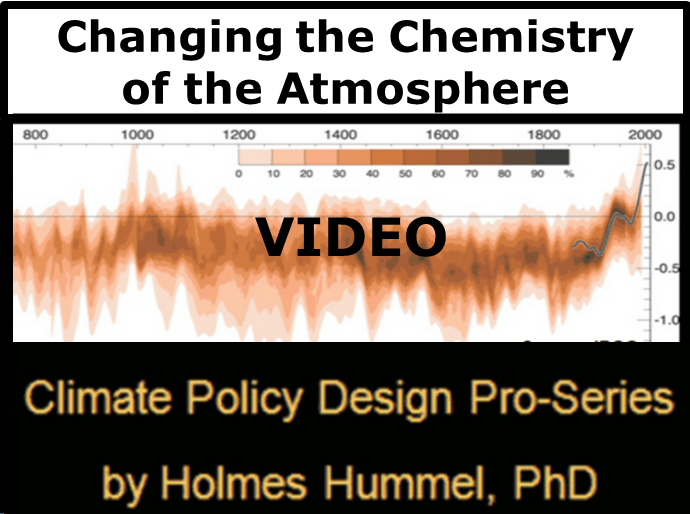Emitting CO2:
changes the chemistry of the atmosphere of the oceans and the climate of our planet.
The atmospheric greenhouse effect
Atmospheric CO2 over the past 650,000 years
only zero carbon only zero carbon only zero carbon only zero carbon only zero carbon only zero carbon only zero carbon
Global warming and climate change by CO2 (and other GHG) emissions are causing the 'enhanced greenhouse effect '.
NB. The climate system includes the oceans.
The science of zero carbon demands that all CO2 sources be addressed in policy planning / making.
Oceans
The oceans are the ultimate control of the climate and so the oceans capacity to cycle CO2 must not be damaged.
The acidification of the ocean is being caused by the extra CO2 in the atmosphere, because more CO2 from the atmosphere (air) is being dissolved in the ocean water. Ocean acidification will last 1000 years.
The warming and the acidification of the ocean results in two carbon feed backs leading to more CO2 building up in the atmosphere .
Less carbon dioxide from the atmosphere dissolves in warmer ocean water and so the more the ocean warms, the more carbon dioxide will be left in the atmosphere.
The higher the concentration of dissolved carbon dioxide in the ocean, the less efficient the oceans become at dissolving carbon dioxide and of sinking carbon in ocean sediment.
These are major changes to the oceans which the scientists say will have profound negative effects on the climate system.
The warming and the acidification of the ocean results in two carbon feed backs leading to more CO2 building up in the atmosphere .
Less carbon dioxide from the atmosphere dissolves in warmer ocean water and so the more the ocean warms, the more carbon dioxide will be left in the atmosphere.
The higher the concentration of dissolved carbon dioxide in the ocean, the less efficient the oceans become at dissolving carbon dioxide and of sinking carbon in ocean sediment.
These are major changes to the oceans which the scientists say will have profound negative effects on the climate system.
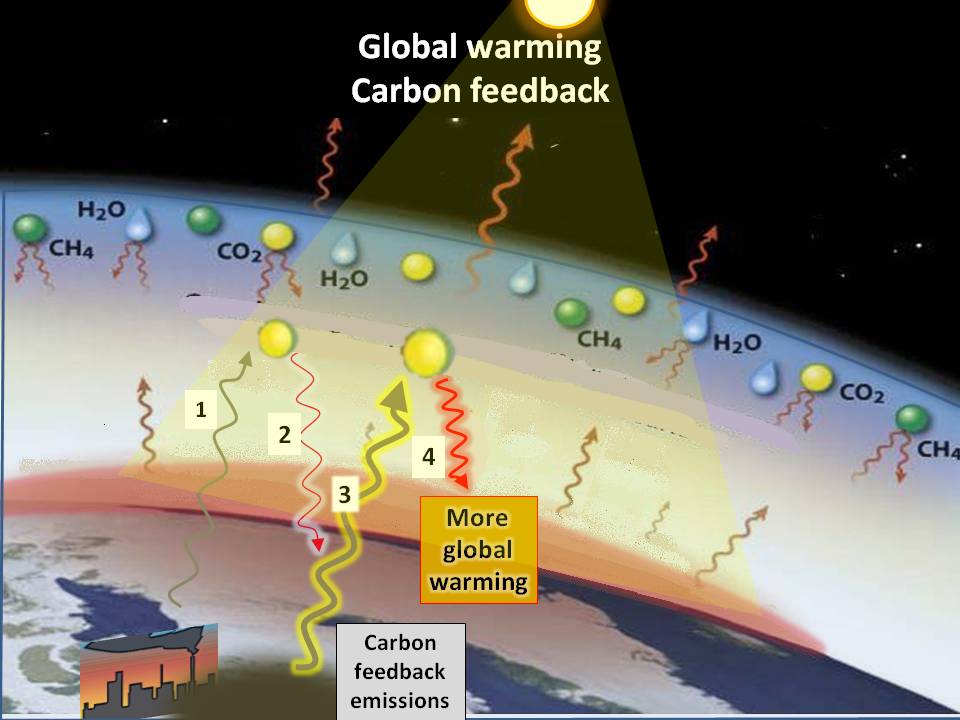
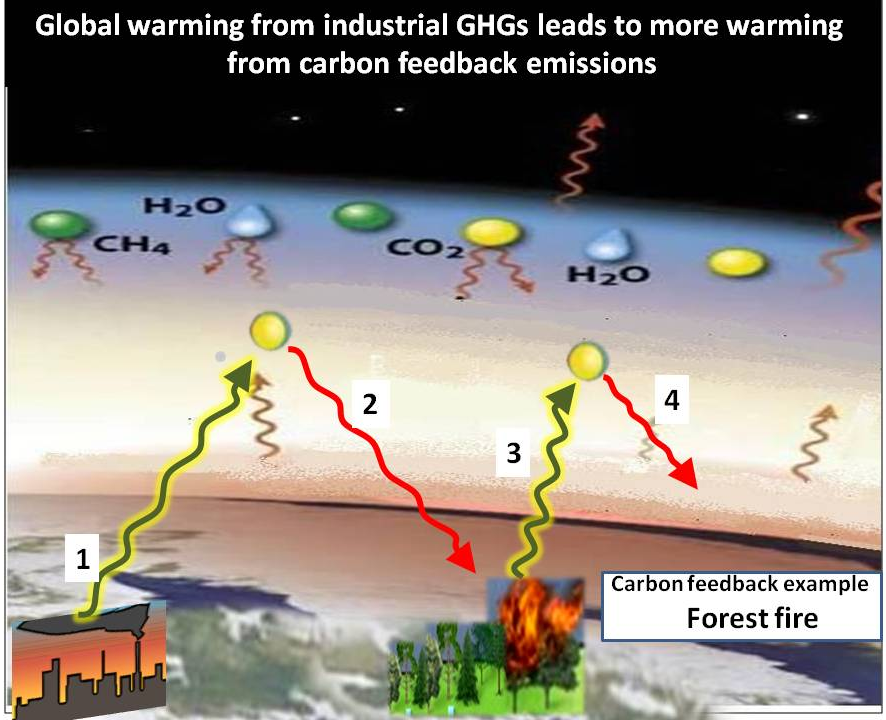
Warming soils under global warming emit CO2 by carbon feedback.
Forest fires emit CO2.
Droughts emit CO2.
Thawing permafrost emits CO2 (and methane).
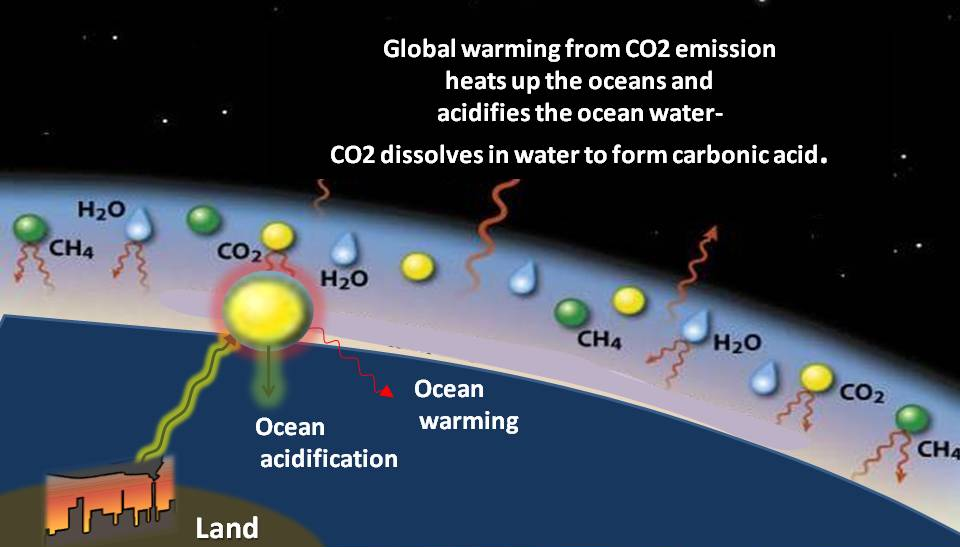
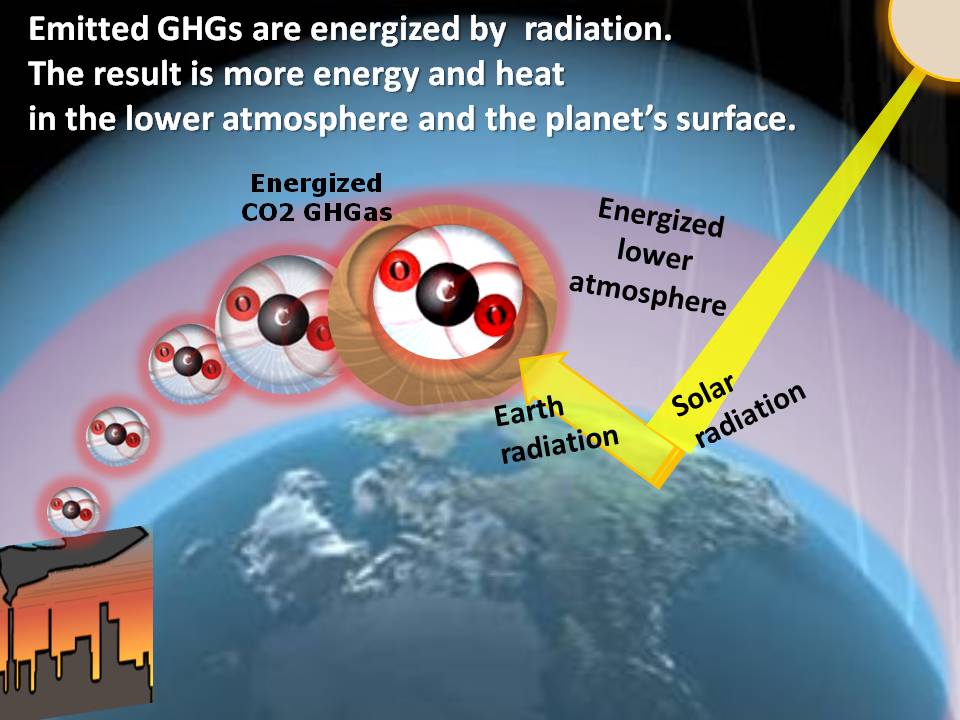
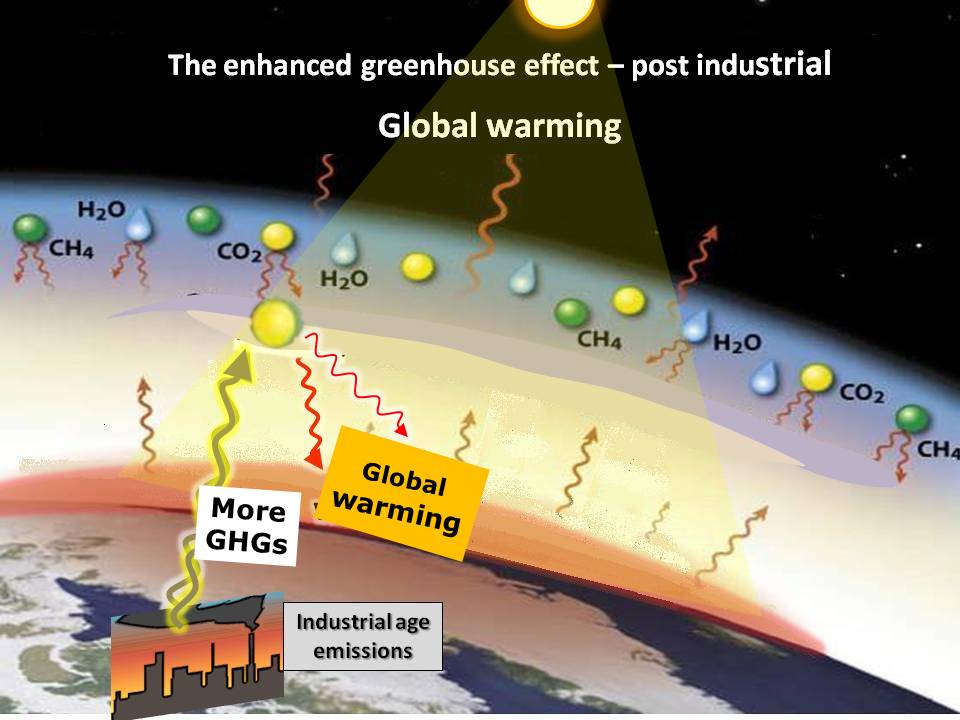
Research at UCLA (2009) has found that Atmospheric CO2 is the highest in over 15 million years.
Global warming is the result of enhancing the atmospheric greenhouse affect by the constant addition of
greenhouse gases into the atmosphere from industrial emissions. As we all know this is mainly from fossil fuels for energy. Other CO2 emissions sources are deforestation,agriculture , and cement making.
Carbon dioxide (CO2) is responsible for most of the warming.
The enhanced greenhouse effect is the inevitable result of increasing the amount of GHGs in the atmosphere (concentration).
That is because by their atomic structure when emitted into the atmosphere GHGs become heat radiators.
They are energized by heat being radiated from the surface of the planet and energized by this heat energy they (re) radiate heat energy. The result is the lower atmosphere and surface of the planet is warmed up.
Because CO2 lasts in the atmosphere for 1000 years (20% of co2 emissions) the global warming caused by the extra CO2 in the atmosphere will last more than 1000 years. That is why only stopping CO2 emissions (zero) can result in stopping the rise of atmospheric CO2 and so the rise in global temperature and also the rise ion ocean acidity.
The enhanced greenhouse effect is the inevitable result of increasing the amount of GHGs in the atmosphere (concentration).
That is because by their atomic structure when emitted into the atmosphere GHGs become heat radiators.
They are energized by heat being radiated from the surface of the planet and energized by this heat energy they (re) radiate heat energy. The result is the lower atmosphere and surface of the planet is warmed up.
Because CO2 lasts in the atmosphere for 1000 years (20% of co2 emissions) the global warming caused by the extra CO2 in the atmosphere will last more than 1000 years. That is why only stopping CO2 emissions (zero) can result in stopping the rise of atmospheric CO2 and so the rise in global temperature and also the rise ion ocean acidity.
Carbon feedback CO2 emission is another additional source of carbon dioxide emitted by the planet that results from the warming of the planet's surface and it has to be considered in zero carbon planning.
A simple example is a forest fire.
Fires have already greatly be increased as a result of global warming.
In the illustration the sequence of events is as follows.
1. CO2 emission into the atmosphere from fossil fuel pollution.
2. Global warming caused by increased carbon dioxide in the atmosphere.
3. Global warming dries out and heats forested regions in the summer that catch on fire.
4. The large increase in forest fires from global warming emit carbon dioxide (and soot)into the atmosphere that causes more global warming.
Carbon feedback CO2 emissions
Zero carbon is imperative to stop the acidity of the oceans continuing to increase.
Atmospheric CO2 over 800,000 years
OCEAN ACIDIFICATION
Global Climate Change
How we are changing the planet's climate
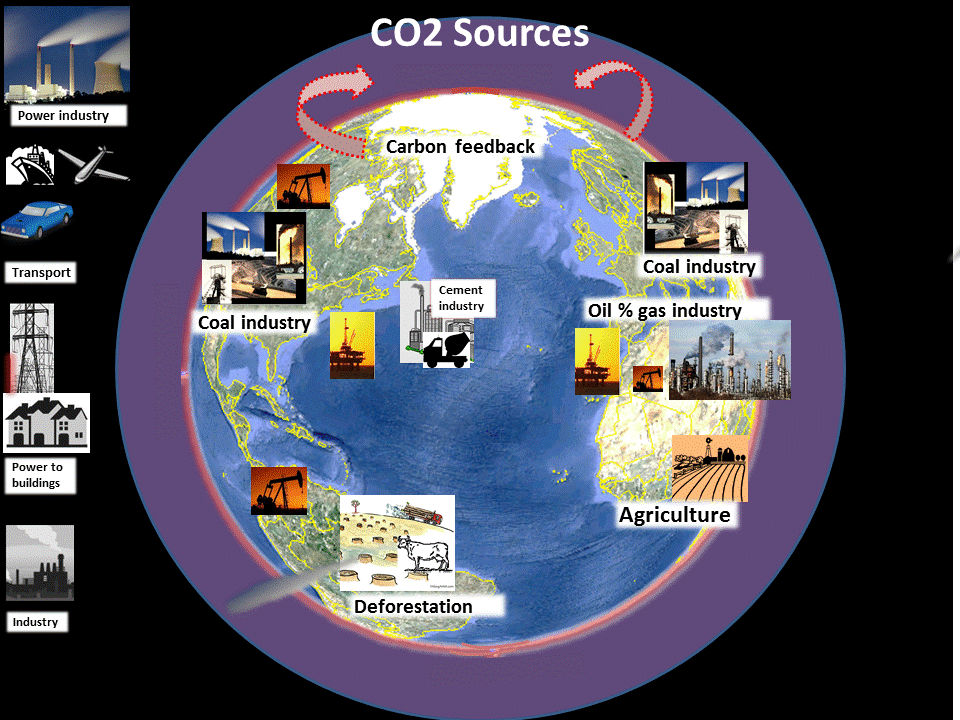
Only stopping all the industrial age emissions of CO2 can stop the chemistry of the atmosphere of the oceans and the climate being changed more.
The climate denial campaign says - So what climate has always changed. That is true the recurrent cycles of long ice ages and shorter warm interglacial periods. For the past million years this has occurred over and over again at 100,000 year intervals. About 80-90,000 years of ice age with about 10-20,000 years of warm period. The difference is enormous. We are adding greenhouse gases during a warm period - not deep in an ice age as happens naturally. We are doing so at a rate thousands of times faster than has ever happened before.
The climate denial campaign says - So what climate has always changed. That is true the recurrent cycles of long ice ages and shorter warm interglacial periods. For the past million years this has occurred over and over again at 100,000 year intervals. About 80-90,000 years of ice age with about 10-20,000 years of warm period. The difference is enormous. We are adding greenhouse gases during a warm period - not deep in an ice age as happens naturally. We are doing so at a rate thousands of times faster than has ever happened before.
Research suggests ocean acidification is the highest in 15 milModels lion years and the rate of acidification the highest in 65 million years (Past constraints on the vulnerability of marine calcifiers to massive carbon dioxide release
Andy Ridgwelll)
Andy Ridgwelll)
Industrial emissions and deforestation are adding CO2 to the atmopshere 14,000 times faster than the planet can remove CO2 (Close mass balance of long-term carbon fluxes from ice-core CO2 and ocean chemistry records R. Zeebe 2008).
